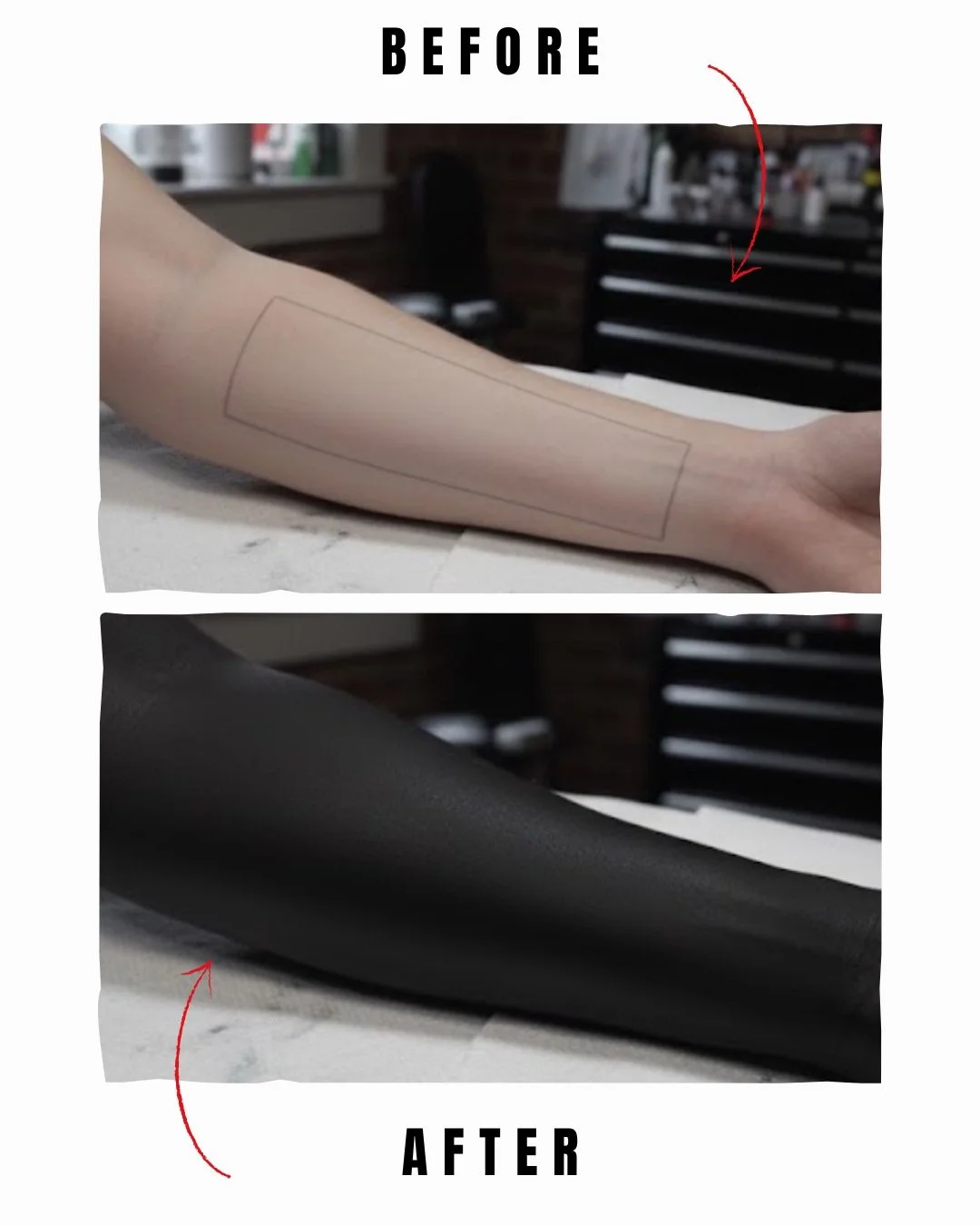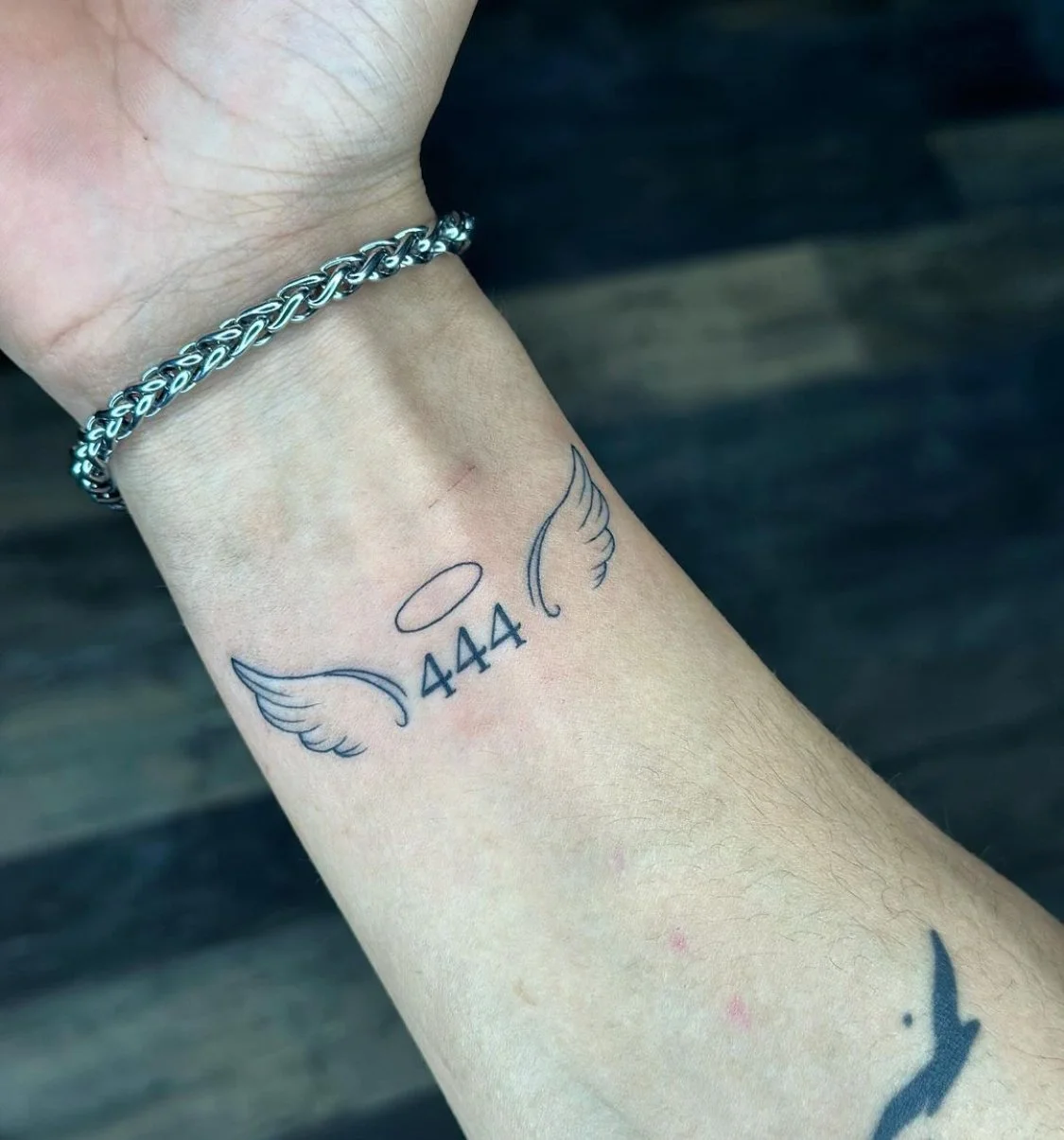What Are Blackout Tattoos? Everything You Need to Know Before Going Bold
Blackout tattoos have become one of the most daring and visually striking trends in modern tattoo culture. Unlike delicate or minimalist designs, these bold pieces cover large areas of the skin with solid black ink, creating a dramatic, unmistakable statement. They’re a way to express individuality, transform old tattoos, or explore creative design possibilities that push the limits of body art.
Approaching a blackout tattoo with preparation and intention is essential. From understanding the design options to navigating multiple sessions and the healing process, careful planning ensures the final result is both stunning and long-lasting.
Why Blackout Tattoos Are Gaining Popularity
Blackout tattoos are more than just a visual statement. Their rise in popularity is tied to several factors:
Aesthetic Appeal: The solid black sections create a bold, striking contrast on the skin. Many enthusiasts are drawn to the dramatic simplicity of this style.
Creative Freedom: Artists can incorporate negative space, geometric patterns, or other motifs within the black areas, turning a solid color block into an intricate work of art.
Cover-Up Capabilities: Blackout tattoos are often used to cover old or unwanted tattoos. The solid black ink effectively masks previous designs while giving a fresh, cohesive look.
Cultural Influence: Inspired by traditional tribal tattoos and modern body modification practices, blackout tattoos often carry symbolic meanings related to transformation, identity, and personal expression.
For many clients, the idea of undergoing a blackout tattoo session can be intimidating. These tattoos require large areas of skin to be saturated, sometimes in multiple sessions, which can involve extended time in the chair and a higher level of discomfort compared to smaller designs. Yet, for those committed to making a bold statement, the results are undeniably striking.
For those exploring different styles, it can help to explore popular tattoo styles this 2026 to see how blackout tattoos compare to minimalist, fine line, and abstract designs before committing to a large-scale piece.
What Exactly Is a Blackout Tattoo?
At its core, a blackout tattoo is a design where large portions of skin are completely filled with black ink. While it might sound simple, creating a blackout tattoo requires precision, patience, and a strong understanding of the skin’s anatomy. The goal is to achieve even saturation without inconsistencies, streaks, or fading.
Blackout tattoos are often done in sessions, especially when covering a large area such as a full sleeve, chest panel, or leg. The size and complexity of the piece determine the number of sittings needed. During each session, the artist carefully layers ink to ensure even coverage, paying special attention to areas where the skin might be more sensitive or uneven.
Many artists also incorporate creative elements within the blackout tattoo, such as:
Negative space designs: Using areas of untouched skin to create shapes or patterns within the black block.
White ink highlights: Adding subtle white or light-colored details for contrast.
Geometric or abstract motifs: Incorporating sharp lines, patterns, or artistic shapes to break up the solid black.
These variations allow each blackout tattoo to be a unique piece of art, blending bold coverage with intricate design.
Blackout Tattoo Meaning and Symbolism
While the meaning of a blackout tattoo can vary widely depending on the individual, several common interpretations exist:
Transformation: Covering old tattoos or scarred areas symbolizes starting fresh or personal growth.
Bold Expression: The dramatic visual impact reflects confidence, individuality, and a willingness to stand out.
Cultural Significance: Rooted in traditional tribal tattoos, blackout designs can carry historical or spiritual meanings in some cultures.
Ultimately, the meaning of a blackout tattoo is personal. Whether used as a statement piece, a form of body art, or a cover-up solution, it communicates intent and identity through bold visual language.
Blackout Tattoo Design Ideas
The possibilities for blackout tattoos are vast. Some popular approaches include:
Full Sleeves: Covering the entire arm with solid black or incorporating geometric patterns for a dynamic look.
Leg Panels: Large areas such as thighs or calves are ideal for expansive blackout designs.
Torso and Back Coverage: Broad, uninterrupted areas allow for massive blackout pieces, often enhanced with negative space motifs.
Partial Blocks: Using smaller blackout sections to highlight or accentuate other tattoos or body features.
For a truly unique design, consider working with a skilled artist to create a customized tattoo that reflects your vision and complements your body shape. Customized designs ensure that your blackout tattoo is not only visually striking but also uniquely yours.
What to Expect During a Blackout Tattoo Session
Blackout tattoos are intense, both in terms of size and process. Here’s what you can expect:
Duration: Large sections may require multiple sessions, each lasting several hours.
Pain Level: The intensity varies depending on placement. Areas with thin skin or high nerve density, like ribs or inner arms, can be more painful.
Preparation: Hydrate, get adequate rest, and wear comfortable clothing that allows access to the tattoo area.
Session Breaks: Long sessions may include short breaks to minimize fatigue and swelling.
Working with a professional tattoo shop ensures you receive guidance, safety, and precision throughout the process. Open communication with your artist helps manage pain and ensures the tattoo is applied evenly.
Healing and Aftercare for Blackout Tattoos
Proper aftercare is essential for any tattoo, and blackout tattoos are no exception. Due to the size and intensity of these pieces, care must be diligent to prevent infection and ensure proper healing.
Healing Timeline:
Initial Stage (Days 1–7): Redness, swelling, and tenderness are common. Keep the area clean and avoid touching unnecessarily.
Peeling Stage (Days 7–14): Skin may flake or peel as it heals. Pat dry gently and continue moisturizing lightly.
Surface Healing (Days 15–30): The skin appears healed, but deeper layers are still recovering. Protect the tattoo from the sun and friction.
Full Recovery (1–3 Months): The tattoo fully settles into the skin, revealing the final appearance.
Tips for Optimal Healing:
Wash gently with mild, fragrance-free soap.
Apply a thin layer of approved moisturizer.
Avoid soaking in baths or swimming pools during the first weeks.
Keep the tattoo covered from direct sunlight until fully healed.
Following proper aftercare ensures your blackout tattoo heals beautifully, retaining its bold, uniform appearance for years.
Pros and Cons of Blackout Tattoos
Pros:
Visually striking and bold.
Effective for covering old tattoos or imperfections.
Offers creative opportunities with negative space or geometric designs.
Cons:
Time-consuming with multiple sessions.
Higher pain levels compared to smaller tattoos.
Requires careful long-term maintenance to prevent fading.
Weighing these factors is essential before committing to a blackout tattoo, especially if it’s your first large-scale piece.
Placement Considerations
When choosing a blackout tattoo, placement matters. Common areas include:
Arms and sleeves for expansive linear designs.
Legs for thigh or calf coverage.
Back or torso for large canvas designs.
Factors like movement, sun exposure, and friction from clothing should be considered, as these can affect healing and the longevity of your tattoo.
Conclusion
Blackout tattoos are more than just a bold design choice they are a statement of individuality, transformation, and confidence. Committing to such a large and striking piece requires careful consideration, dedication, and trust in your artist, but the results can be truly transformative. Each line, each solid block of black, tells a story of personal expression and artistic vision.
For anyone drawn to this style, it’s important to approach it with patience, preparation, and respect for the process. From planning the design to navigating multiple sessions and the healing journey, a blackout tattoo is a commitment to both art and self-expression. When done thoughtfully, the final result is not just ink on skin, it’s a powerful reflection of identity, creativity, and boldness that will stand the test of time.
Frequently Asked Questions
-
Pain varies by placement and individual tolerance. Areas with thin skin or high nerve density, such as ribs or inner arms, tend to be more sensitive. Breaks during sessions can help manage discomfort.
-
Yes, one of the main purposes of blackout tattoos is to cover existing tattoos. The solid black ink effectively masks previous designs while providing a fresh, bold appearance.
-
Surface healing typically takes 2–3 weeks, while deeper layers of skin can take up to 3 months to fully recover. Following aftercare instructions ensures proper healing and longevity.








